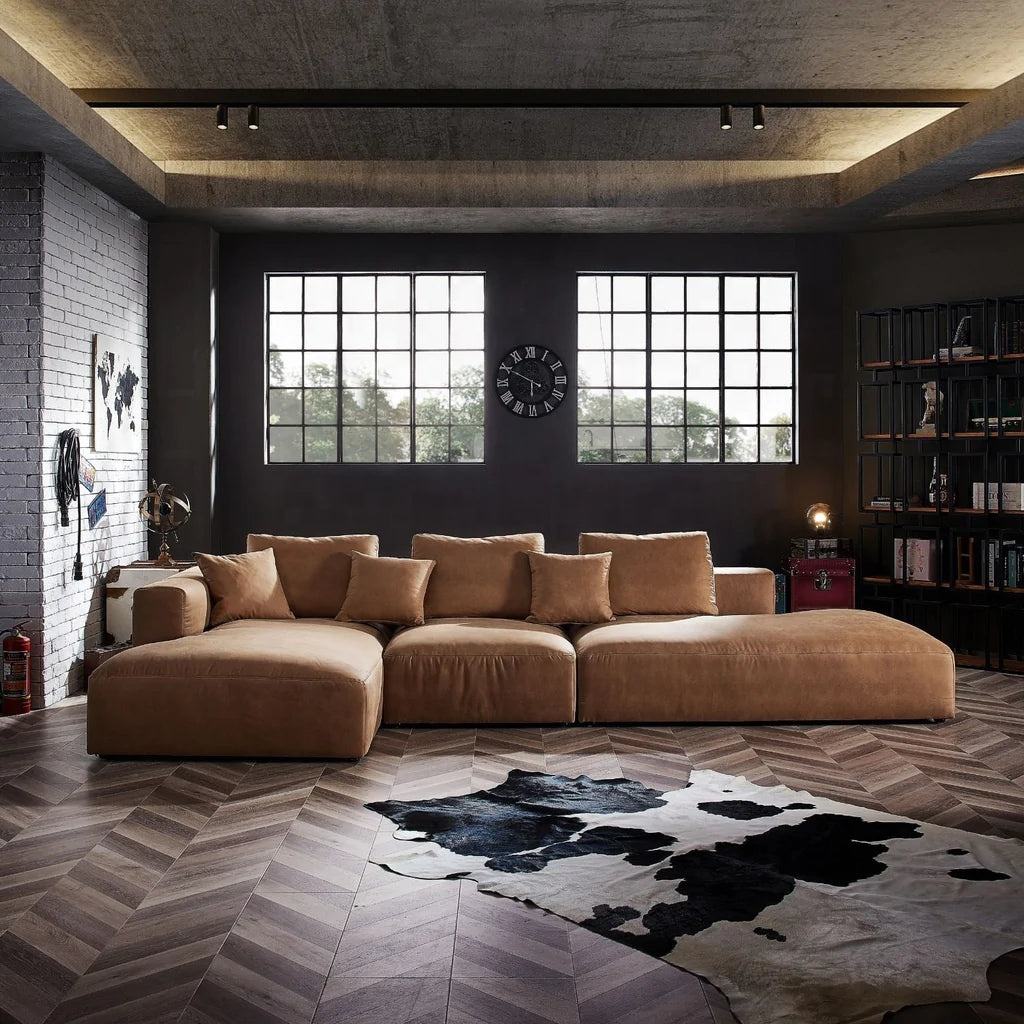Title: The Ingenious Invention of the Sofa: A Historical Exploration
The sofa, a ubiquitous piece of furniture in homes and public spaces around the world, has a rich history that dates back to ancient civilizations. The earliest known examples of sofa-like furniture were found in Egypt, where pharaohs were known to have reclined on cushions made from soft materials such as wool and cotton. In ancient Rome, sofas were often covered in luxurious fabrics and adorned with intricate carvings and designs.Over time, the design and function of the sofa evolved to meet changing social and cultural needs. During the Victorian era, sofas became increasingly grandiose, featuring ornate carvings, plush upholstery, and high backs. In the 20th century, modernist designers such as Charles Eames and Le Corbusier introduced sleek, minimalist designs that emphasized functionality over form.Today, there are countless variations of sofa designs available, ranging from casual to formal, modular to custom-made. Materials such as leather, microfiber, and synthetic materials have also become popular options for sofa upholstery. Despite its long history, the sofa remains a beloved piece of furniture that continues to evolve with changing tastes and lifestyles.
Introduction

The sofa, a comfortable and versatile piece of furniture, has become an essential part of modern living. Its design and functionality have evolved over time to accommodate various styles, needs, and preferences. However, the origins of this iconic piece of furniture are shrouded in history, with many theories surrounding its invention and who might have been responsible for creating it. This article will delve into the fascinating story of the sofa, exploring its evolution, notable features, and potential inventors.
The Earliest Sofas
The earliest known example of a sitting apparatus dates back to ancient Egypt, where a stone bench was used for resting on. However, it wasn't until the Roman Empire that the concept of a comfortable seating area began to take shape. Roman architects and artisans created padded chairs and couches made from materials such as wool, leather, and wicker. These early pieces were designed for both function and aesthetics, with intricate carvings and embellishments adorning their surfaces.
The Middle Ages saw a resurgence in interest in luxurious furnishings, and the sofa began to emerge as a symbol of wealth and status. During this period, large, heavy wooden benches were commonly used as seating options in homes and palaces. It was not until the Renaissance era that a more refined version of the sofa began to emerge. French craftsmen began to create plush, cushioned seats out of silk and other high-quality materials, resulting in the creation of some of the most exquisite examples of the time.
English Innovations
In England during the 17th century, the sofa underwent a significant transformation. The English aristocracy began to adopt new styles of architecture and interior design, which emphasized comfort and relaxation. As a result, the sofa became a central feature of English living rooms, featuring plush cushions and intricate upholstery. Some of the earliest examples of the modern-day sofa can be found in works by renowned British designers such as William IV and George III.
During the 18th and 19th centuries, several inventors attempted to improve upon the traditional design of the sofa. One notable example is Thomas Chippendale, an influential British furniture designer who introduced the "sofa bed" concept in the 1760s. This design featured a low profile seat with a raised platform that could be converted into a bed when needed. Another notable figure in sofa innovation is George Cruickshank, a Scottish architect and furniture maker who introduced the "lounging chair" or "couch" in the late 18th century. His designs were characterized by their simplicity and practicality, making them popular among middle-class families.

Industrialization and Modernization
As the Industrial Revolution swept across Europe and America in the 18th century, so too did changes in the production of furniture. New machines were developed that allowed for mass production of sofas, leading to a decrease in costs and increased accessibility for consumers. This period also saw the introduction of new materials such as cotton, which replaced silk as a primary fabric choice for sofa upholstery. Additionally, new manufacturing techniques such as steam-powered looms made it possible to produce more intricate and detailed designs than ever before.
The early 20th century saw further innovations in sofa design as manufacturers began to focus on creating functional seating solutions that catered to modern lifestyles. Examples include foldout sofas that could be easily tucked away during times of limited space and reclining chairs with built-in headrests for added comfort. The Art Deco movement also had a significant impact on sofa design during this period, with sleek lines, geometric shapes, and bold colors becoming increasingly popular.
Conclusion
The story of the sofa is one that spans thousands of years and involves countless individuals who contributed to its evolution. While it is impossible to determine with certainty who was responsible for creating the first modern-day sofa, it is clear that each new development has been shaped by the unique circumstances and preferences of different cultures and time periods. From its humble beginnings as a simple wooden bench to its current status as a luxurious centerpiece of modern living spaces, the sofa has come a long way – but its journey is far from over.
Articles related to the knowledge points of this article:
Title: The Allure of Gucci Ties: A Timeless and Elegant Accessory
Womens Down Jackets Collection
Hoodie and Down Jacket: A Fashion Combination that Never Fails



